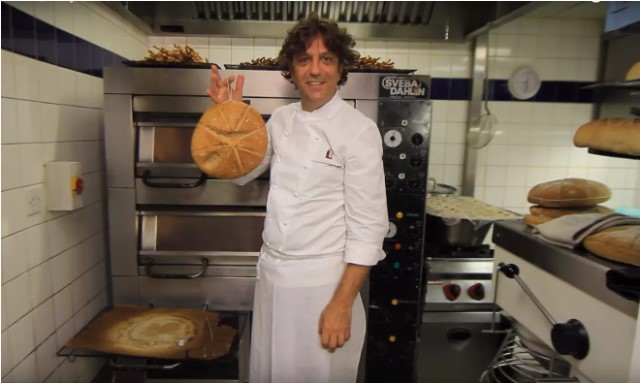How do we know the recipe is real? Because during excavations of Herculaneum in 1930, a loaf of bread was discovered still inside an oven.
Here it is, courtesy of The British Museum and Chef Giorgio Locatelli.
You'll need 21 ounces of that sourdough you have taking up space, 4 teaspoons of sugar, 4 teaspoons of salt, a pint of water, 18 ounces of buckwheat flour, and 18 ounces of regular flour. If that seems like a lot of flour, yes, that is a big loaf so cut it all in half if you prefer.
Mix the plain flour and buckwheat flours (they use wholemeal and spelt) and pour it on to your your wood or table or wherever you make dough. Create a sink in the middle.
Dissolve the salt and sugar into the water. Mix the sourdough into the flour bit by bit, pouring it into the well you’ve just created. Once the sourdough is roughly mixed, begin to pour the water into the well slowly, mixing gently with your hands. Mix until all the water is gone, and any excess flour is incorporated into the dough. You will end up with a rough ball.
Start kneading the dough gently, folding it back on itself so it can ‘take in’ some air. Knead for a few minutes until you can form it into a smooth ball.
Flatten the ball slightly as in the video, and transfer it to an oiled baking tray. Cover it, and leave it to rise for 1.5–2 hours in a warm room. While you’re waiting, perhaps investigate some other ancient recipes to enjoy your bread with!
The next two steps are optional, but if you’re going for historical accuracy here, they’re a must. Cut a piece of string long enough to go round your risen dough, with a bit left over to tie a knot. Wrap the string around the sides of the dough, pull it tight so it makes a lip around the side, and tie a knot to secure it.
Now, take a knife to score the top into eight equal segments. Real loaves from the Roman period were often stamped too. If you want, now’s the time to add your own stamp. It could be your initials or whatever you want, but bear in mind that your stamp must be oven-proof, and will need to be weighed down during baking with something heavy (like baking beans wrapped in foil).
Bake for 30–45 minutes at 400 degrees Fahrenheit.







Comments